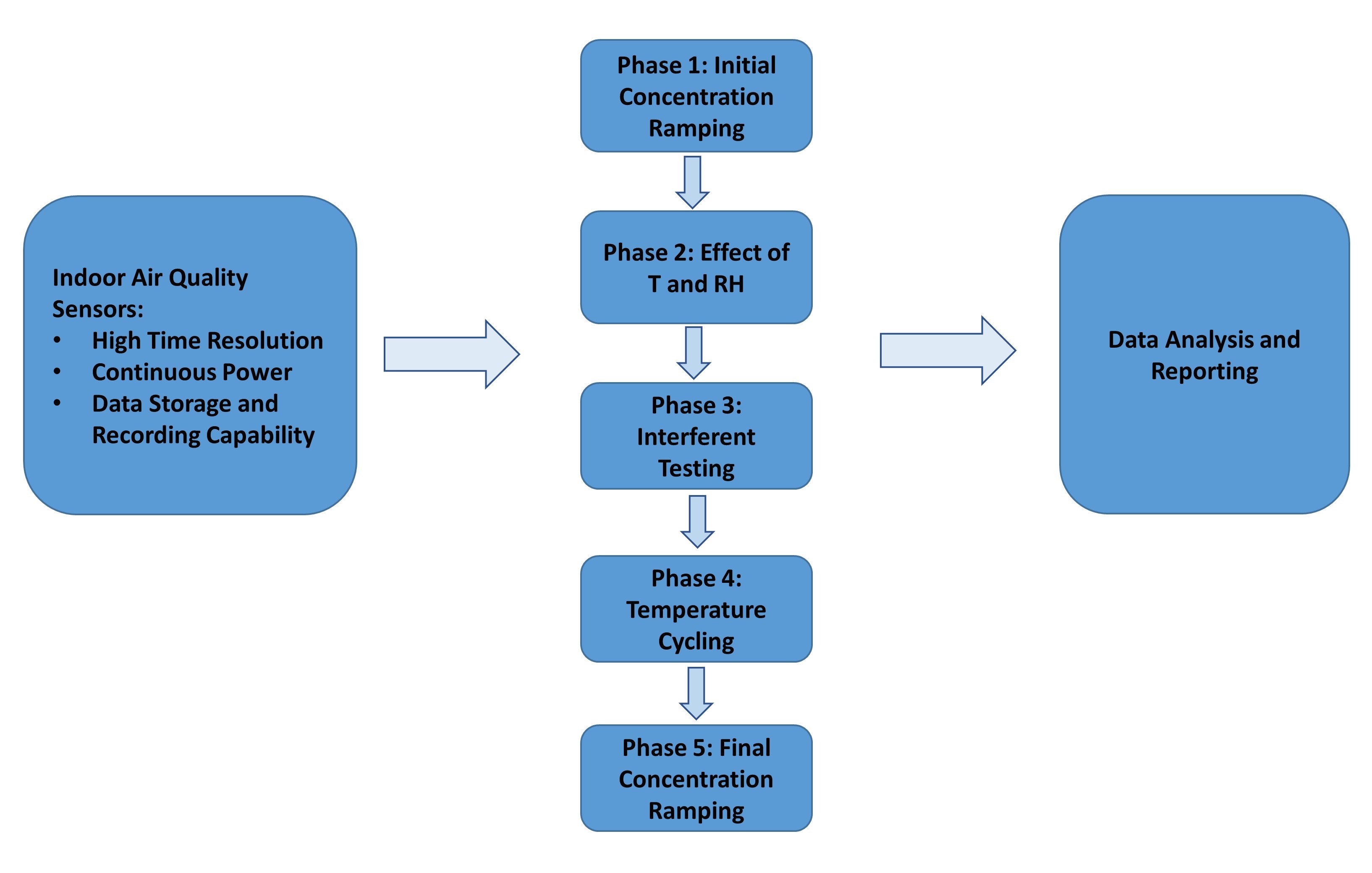ASTM International Test Standards Development
ASTM International Test Standards Development

Background
Indoor air quality has gained increased interests because people spend 90% of their time in indoor environments. There are many indoor air pollutants (e.g. PM, CO, CO2, NOx, VOC etc) that can potentially cause adverse health impacts. It is important to identify the sources of indoor air pollutants and monitor their concentrations to better control and improve indoor air quality.
Real-time indoor air quality sensors can provide feedback data to improve indoor air quality through ventilation, filtration, or other air quality control treatments. The systematic evaluation of the effectiveness of these sensors to accurately assess indoor air pollutant concentrations is limited. In order to provide better sensor information for users to make informed environmental control decisions, Standard Test Methods for CO2/PM2.5 Sensor Units Intended for Indoor Air Application were developed in coordination with ASTM International to establish comprehensive protocols to evaluate commercially available indoor air quality sensors. These methods are one of the most comprehensive, exacting, and rigorous evaluation protocols ever developed for PM2.5 and CO2 indoor air quality sensors. These protocols are designed to test indoor air quality sensors for their ability to measure a wide range of pollutant concentrations, recover from loss of power, and perform under various climate conditions and in the presence of interferents, using South Coast AQMD’s Air Quality Sensor Performance Evaluation Center (AQ-SPEC) environmental test chambers and reference instrumentation.
to establish comprehensive protocols to evaluate commercially available indoor air quality sensors. These methods are one of the most comprehensive, exacting, and rigorous evaluation protocols ever developed for PM2.5 and CO2 indoor air quality sensors. These protocols are designed to test indoor air quality sensors for their ability to measure a wide range of pollutant concentrations, recover from loss of power, and perform under various climate conditions and in the presence of interferents, using South Coast AQMD’s Air Quality Sensor Performance Evaluation Center (AQ-SPEC) environmental test chambers and reference instrumentation.
Standard Test Methods for PM2.5 Sensors or Sensor Units Intended for Indoor Air Application
The PM2.5 standard test method was first drafted in early 2018 and validated in 2019 using the AQ-SPEC environmental test chamber #1 (SenTec-1). Following its initiation into the ASTM International balloting process in early 2020, and then several rounds of subcommittee commenting and revision, the PM2.5 standard test method was approved by ASTM International on September 1, 2021 and was designated as ASTM D8405-21 Standard Test Method for PM2.5 Sensors or Sensor Systems Used in Indoor Air Applications . A manuscript describing the development of this new test method was published by Mui et al. in the Journal of Occupational and Environmental Hygiene under the title "Development of ASTM International D8405 - Standard Test for Evaluating PM2.5 Sensors or Sensor Systems used in Indoor Air Applications".
. A manuscript describing the development of this new test method was published by Mui et al. in the Journal of Occupational and Environmental Hygiene under the title "Development of ASTM International D8405 - Standard Test for Evaluating PM2.5 Sensors or Sensor Systems used in Indoor Air Applications".
Additionally, the Home Ventilating Institute (HVI) may plan to provide certifications based on this ASTM PM2.5 test method.
may plan to provide certifications based on this ASTM PM2.5 test method.
Presentation of the ASTM D8405-2021 PM2.5 Test Method at the 39th AAAR Annual Conference, 2021
39th AAAR Annual Conference - ASTM PM2.5 Test Method Presentation
Standard Test Methods for CO2 Sensors or Sensor Units Intended for Indoor Air Application
The CO2 standard test method was first drafted in early 2018 and validated in early 2020 using the AQ-SPEC environmental test chamber. Following its initiation into the ASTM International balloting process in December 2021, and then several rounds of subcommittee commenting and revision, the CO2 standard test method was approved by ASTM International on August 2025 and was designated as ASTM D8624-25 Standard Test Method for CO2 Sensors or Sensor Systems Used in Indoor Air Applications. AQ-SPEC staff are also drafting a manuscript for submission to a peer-reviewed journal describing the development of this new test method.